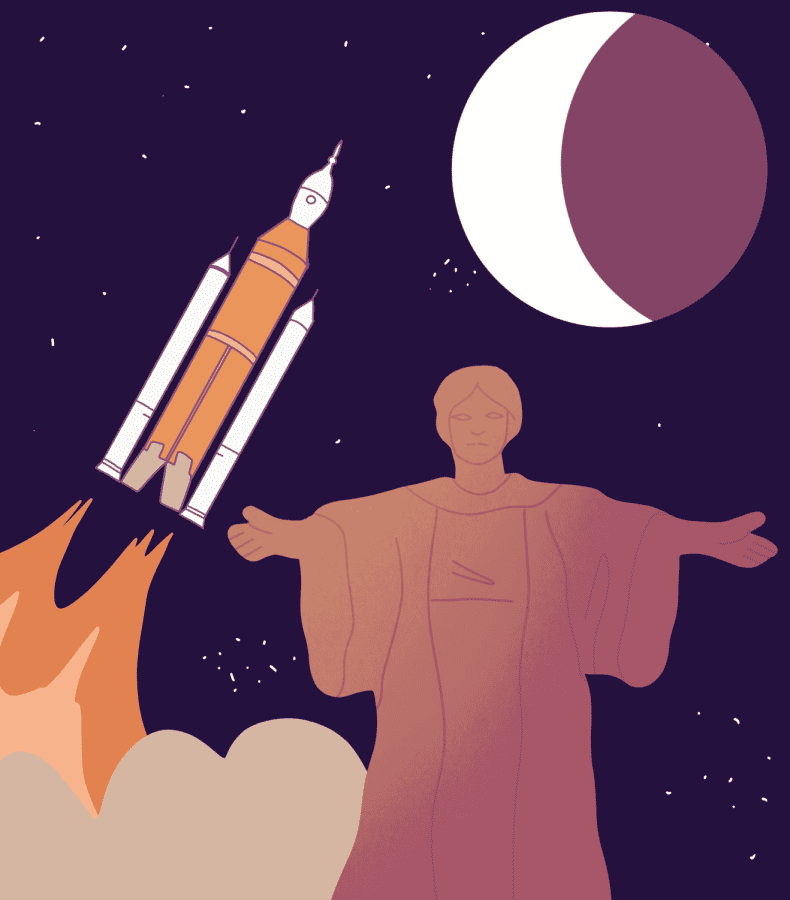Grainger research aims for the skies
Sep 22, 2022
Last updated on Oct. 21, 2022 at 03:56 p.m.
Being one of the premier research institutions in the nation, Illinois students are surrounded by top-tier researchers from all around the world everyday.
While most students are aware of the Illinois alumni who helped create YouTube and PayPal, some of the lesser-known discoveries by Illinois researchers are just as noteworthy. Whether it be Donald Bitzer creating the first computer-assisted-instruction system or Carl Woese defining the third domain of life, many aspects of everyday life have been altered by research conducted at Illinois.
Considering what has been achieved in the past, it is worth considering what may come from Illinois researchers in the future.
Zachary Putnam, assistant professor in Engineering, is one of many whose research might lead to something big. Specializing in the “space” side of aerospace, Putnam has previously worked on exciting projects, such as NASA’s Orion Spacecraft, focusing his work on improving the landing process for spacecraft.
Get The Daily Illini in your inbox!
“Our specialty really is planetary landing systems,” Putnam said. “We call that Entry, Descent and Landing or EDL. That really is my main area of expertise, and in recent years I’ve had graduate students working on … we’ll say novel control schemes.”
Putnam’s research on novel control schemes is centered around making it easier to control spacecraft as they return to Earth. Putnam said he is excited by the potential effects of having better controls for returning spacecraft, and he described the desired outcomes of his research.
“If we can do a better job of steering these vehicles, we can do a better job of doing precision landings to hit a target, we can fly bigger vehicles, or maybe we can reduce the cost,” Putnam said.
Putnam said reducing cost is something he cares a lot about, hoping that one day it will be feasible for smaller groups to perform scientifically significant surface missions on other planets.
“I think there are some technologies that if we can mature them and convince people that their risks are manageable, I think we could see small scale and relatively low cost but still scientifically significant missions to Mars and other places,” Putnam said. “Small enough and low enough cost that someone besides NASA can do it, say smaller labs, universities and other countries.”
Aside from being an impressive feat, Putnam believes making surface missions more accessible will be very beneficial for the aerospace and scientific community.
“If we can start sending more and more missions to these places and do more and more cool stuff we’ll learn that much more,” Putnam said. “We’ll have a much bigger community, and it’ll get that much easier. Eventually, that will help us do more significant things with larger vehicles.”
While University-led space missions may initially seem like the distant future, space research is becoming more and more accessible every day.
Soumyo Dutta, an aerospace engineer from NASA Langley Research Center, is currently working on a probe that will launch in 2029 with the goal of analyzing the atmosphere of Venus. Aboard the probe is a sensor designed by undergraduate and graduate students as part of NASA’s student collaboration experiment.
Considering the work he has seen from undergraduate and graduate students on advanced projects like his own, Dutta said he is optimistic about Putnam’s hope of University-led space missions. With the accelerating rate of technological change, it’s not unthinkable that small-scale student-led space missions will be possible within the next 10 years, let alone 20.
“If you were asking me that question 10 years ago, I would’ve said ‘ehhh maybe not,’” Dutta said. “I certainly think that right now, students from universities like (Illinois) can do instruments on missions. Can they do their own missions in the future? I think in 10 or 20 years, maybe so.”
Also weighing in on the possibility of university space missions is Brian Woodard, professor in aerospace engineering. Woodard said he believes a standardized way to conduct missions could dramatically lower costs, relating the idea to how affordable it has become to put small satellites, namely CubeSats, into orbit.
“It’s kinda like the same idea as the CubeSats,” Woodard said. “Everyone who does small satellites research has kind of agreed on this basic structure of what a CubeSat launch is going to be and so now getting them launched, which used to be a huge challenge, NASA launches some of them for free or you pay just $10,000 which in a research budget is nothing … I think it is kind of analogous to that. So I agree with (Putnam).”
Similarly, Negar Mehr, assistant professor in Engineering, said she is excited at the prospect of space missions at the University. Mehr’s research specializes in robotics, but with how interdisciplinary technology has become, she said she believes her research will most certainly have a place in future space exploration, particularly affordable missions like the ones Putnam proposes.
“What excites me the most is that, as someone who works on robotics, I feel like the more exploration we do in space, the more we can leverage robots for exploration purposes,” Mehr said. “So, on the aerospace side of things, the way that I see it, I would love to bring in the intelligence that robots offer to explore more and learn more about the universe.”






